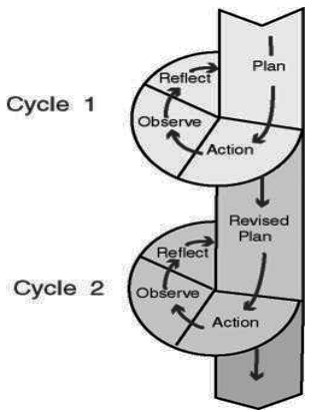การพัฒนากิจกรรมการเรียนรู้ด้วยวัฏจักรการเรียนรู้แบบ 5E ร่วมกับการเรียนรู้ร่วมมือแบบแข่งขันเป็นทีม (TGT) ต่อมโนมติสารละลายและความสามารถในการคิดวิเคราะห์สำหรับนักเรียนระดับชั้นมัธยมศึกษาปีที่ 5 ที่มีความสามารถทางการเรียนต่างกัน
Main Article Content
Abstract
Kattaleeya Kantum, Nookorn Pathommapas and Pattawan Narjaikaew
รับบทความ: 21 ตุลาคม 2559; ยอมรับตีพิมพ์: 4 กันยายน 2560
บทคัดย่อ
การวิจัยในครั้งนี้มีวัตถุประสงค์เพื่อ 1) พัฒนาการจัดการเรียนรู้วิชาเคมี เรื่อง สารละลาย ด้วยวัฏจักรการเรียนรู้แบบ 5E ร่วมกับการเรียนรู้ร่วมมือแบบแข่งขันเป็นทีม (TGT) 2) ศึกษาและเปรียบเทียบมโนมติสารละลายและความสามารถในการคิดวิเคราะห์ก่อนเรียนและหลังเรียนของนักเรียนระดับชั้นมัธยมศึกษาปีที่ 5 การวิจัยนี้ใช้รูปแบบการวิจัยเชิงปฏิบัติการตามแนวคิดของ Kemmis and Mc Taggart (1988) แบ่งเป็น 3 วงจรปฏิบัติการ กลุ่มตัวอย่างที่ใช้ในการวิจัยเป็นนักเรียนระดับชั้นมัธยมศึกษาปีที่ 5 จำนวน 1 ห้องเรียน จำนวน 28 คน ภาคเรียนที่ 1 ปีการศึกษา 2559 ที่ได้จากการสุ่มตัวอย่างแบบกลุ่ม เครื่องมือที่ใช้ในการวิจัยแบ่งออกเป็น 3 ส่วน ประกอบด้วยเครื่องมือที่ใช้ในการทดลอง ได้แก่ แผนการจัดการแบบวัฏจักรการเรียนรู้แบบ 5E ร่วมกับการเรียนรู้ร่วมมือแบบแข่งขันเป็นทีม (TGT) จำนวน 9 แผน 2) เครื่องมือที่ใช้ในการสะท้อนผล ได้แก่ แบบบันทึกประจำวัน แบบสังเกตการสอน และแบบสัมภาษณ์นักเรียน และ 3) เครื่องมือที่ใช้ในการประเมินผลการวิจัย ได้แก่ แบบทดสอบวัดมโนมติแบบตัวเลือก 2 ลำดับขั้น และแบบวัดความสามารถในการคิดวิเคราะห์ การวิเคราะห์ข้อมูลเชิงปริมาณใช้ค่าเฉลี่ย ค่าร้อยละ ส่วนเบี่ยงเบนมาตรฐาน การวิเคราะห์ความแปรปรวนพหุนามแบบทางเดียว และการวิเคราะห์เชิงคุณภาพด้วยเทคนิคการวิเคราะห์เนื้อหา ผลการวิจัยพบ ว่า 1) การพัฒนาการจัดการเรียนรู้ด้วยวัฏจักรการเรียนรู้แบบ 5E ร่วมกับการเรียนรู้ร่วมมือแบบแข่งขันเป็นทีมต่อมโนมติ เรื่อง สารละลาย ประกอบด้วย 4 ขั้นตอน ได้แก่ ขั้นที่ 1 ขั้นนำเสนอบท เรียนทั้งชั้นประกอบด้วย 3 ขั้นตอนย่อย คือ ขั้นสร้างความสนใจ ขั้นสำรวจและค้นหา สรุปและอธิบาย ขั้นที่ 2 ขั้นขยายผลและกิจกรรมกลุ่มย่อย ขั้นที่ 3 ขั้นการแข่งขันและการประเมิน ขั้นที่ 4 ขั้นยอมรับความสำเร็จของทีมนำข้อมูลการสะท้อนผลจากการปฏิบัติการของวงจรที่ 1 มาปรับกิจกรรมสำหรับการปฏิบัติการในวงจรที่ 2 คือในขั้นที่ 1 ลดจำนวนกิจกรรมบางส่วนออกเพื่อลดเวลาและขั้นที่ 2 มีการมอบหมายให้นักเรียนไปศึกษาค้นคว้าในเบื้องต้นก่อนในวงจรปฏิบัติการที่ 2 ส่วนในวงจรที่ 3 มีการเปลี่ยนแปลงกิจกรรมในขั้นที่ 3 โดยไม่มีการอธิบายกติกาแต่เพิ่มเวลาให้กับการถาม–ตอบจากโจทย์ที่กำหนด 2) นักเรียนมีมโนมติสารละลายหลังเรียนสูงกว่าก่อนเรียนโดยหลังเรียนนักเรียนมีความเข้าใจมโนมติสารละลายที่ระดับความเข้าใจสมบูรณ์ (SU) และความเข้าใจบางส่วน (PU) เพิ่ม ขึ้น และมีความเข้าใจคลาดเคลื่อน (SM) และไม่เข้าใจ (NU) ลดลงกว่าก่อนเรียน 3) นักเรียนมีความ สามารถในการคิดวิเคราะห์หลังเรียนสูงกว่าก่อนเรียน และ 4) ผลการวิเคราะห์ความแปรปรวนพหุนามแบบทางเดียวของคะแนนหลังเรียนของนักเรียนระดับชั้นมัธยมศึกษาปีที่ 5 ที่มีความสามารถทางการเรียนต่างกัน (เก่ง กลาง และอ่อน) มีมโนมติสารละลายและความสามารถในการคิดวิเคราะห์แตกต่างกันที่ระดับนัยสำคัญ 0.05
คำสำคัญ: มโนมติสารละลาย การจัดการเรียนรู้แบบ 5E การเรียนรู้ร่วมมือแบบแข่งขันเป็นทีม (TGT) ความสามารถในการคิดวิเคราะห์ การวิจัยเชิงปฏิบัติการ
Abstract
The purposes of this research were 1) to develop learning management based on 5E learning cycle and Team–Game–Tournament (TGT) technique on solution concepts; and 2) to study and compare of solution concept and analytical thinking ability before and after learning. The study was conducted based on Kemmis and McTaggart’s action research (1998) consisting of 3 experimental cycles. The samples of this research were 28 of Mathayomsuksa 5 students in the 1st semester of academic year 2016 using the cluster random sampling technique. The research instruments were 1) 9 lesson plans based on 5E learning cycle and TGT cooperative learning; 2) reflection instruments (i.e., a daily record form, classroom observation forms, and an interview forms); as well as 3) evaluation research instruments: a two–tier multiple–choice diagnostic test. The quantitative data were analyzed by using mean, frequency, percentage, standard deviation and one–way MANOVA. In addition, content analysis was used for qualitative data. The findings of the study were as follows: 1) the development of 5E learning cycle supplemented with TGT learning management in solution composed of 4 steps, (1) a teacher teaches in a class which consists of engagement, exploration and explanation, (2) elaboration and small group study (3) evaluation and game tournament, and (4) tournament awards. Reflective practices from the first cycle have been considered to make practice changes in the 2nd cycle and some activities were removed from step 1 and students were assigned to read the text before class in step 2. In the 3rd cycle, the explanation of how to play game session was replaced with asking and answering to the problem in step 3. 2) The students showed gains in understandings of solution concepts from before learning. The students were classified according to achievement motivations showed an increase in sound understanding (SU) of chemical reaction rate concepts and partial understanding (PU). Whereas they showed a decreased in the specific misconception (SM) and no understanding (NU). 3) The students showed gains in analytical thinking ability from before learning. 4) A one–way MANOVA revealed that students with different learning abilities (high, medium and low gains) indicated different understandings of solution concept and analytical thinking ability at the .05 level of significance.
Keywords: Solution concept, 5E learning cycle, Team–Game–Tournament (TGT), Analytical thinking ability, Classroom action research
Downloads
Article Details

This work is licensed under a Creative Commons Attribution-NonCommercial 4.0 International License.
References
A project of science and mathematics Books under the Promotion of Academic Olympiads and Development of Science Education Foundation. (2010). Chemistry 1. 7th ed. Bangkok: Dansunthakarnpim. (in Thai)
Bloom, B. A. (1956).Taxonomy of Education Objective Handbook I: Cognitive Domain. New York: David McKay.
Bureau of Academic Affairs and Educational Standards. (2014). Learning Activities with Scientific Inquiry. Bangkok: Aksornthai. (in Thai)
Charoenwatanatrakoon, W. (2007). Development of Geometric Learning Activities According to Van Hiele Model Together with Cooperative Activities. Master Thesis in Curriculum and Instruction Program, Faculty of Education, Sarakham Rajabhat University. (in Thai)
Costu, B., Ayas, A., and Niaz, M. (2012). Investigating the effectiveness of a POE–based teaching activity on students’ understanding of condensation. Instructional Science 40(1): 47–67.
Fakkao, S. (2001). Child–Centered Learning Management. Bangkok: Chandrakasem Rajabhat University. (in Thai)
Iyawan, T. (2012). The development of grade 6 student’s problem solving ability and learning achievement in the science subject of human body using 5Es inquiry learning cycle. Journal of Education Khon Kaen University 35(4): 27–33. (in Thai)
Kamsingnok, P. (2007). A Comparison of Learning Outcomes Entitled Calculation for Substance Quantities in Chemical Reactions in the Science Learning Strand of Matthayomsuksa 4 between Instruction Using TGT Technique and STAD Technique. M.Ed. Thesis in Curriculum and Instruction Mahasarakham University. (in Thai)
Ketsing, J., and Roadrangka, V. (2010). A case study of science teachers understanding and practice of inquiry–based instruction. Kasetsart Journal: Social Sciences 31: 1–16. (in Thai)
Kwangkeeree, K. (2013). The Development of an Analytical Thinking Skills and Enduring Understanding of Seventh Grade Students Taught by Inquiry–based Learning Approach. Doctoral Thesis in Curriculum and Supervision Program, Faculty of Education, Silpakorn University. (in Thai)
Laopaiboon, B. (1997). Science Teaching. 2nd ed. Bangkok: Thai Watana Panich. (in Thai)
Liu, Y.-L. (2014). The integration of technology and aesthetics when student teachers undertake blended learning in adolescent psychology: An interdisciplinary approach. Educational Research and Reviews 9(20): 1002–1012.
Patha, S. (2011). A Study on Science Learning Achievement and Ability in Analytical Thinking through Team–Game–Tournament and Inquiry Process of Matthayomsuksa 3 Students. Master Thesis in Secondary School Education Program, Faculty of Education, Srinakharinwirot University. (in Thai)
Secondary Educational Service Area Office 21. (2012–2013). O-NET Report2012/2013.
Sripon, P. (2013). The Study of Learning Achievement and Scientific Attitude in Chemistry for Grade 10 Students Using the Inquiry Cycle (5E) Learning Method Together with the Cooperative Learning Method STAD Technique. Master Thesis in Secondary School Education Program, Faculty of Education, Burapha University. (in Thai)
